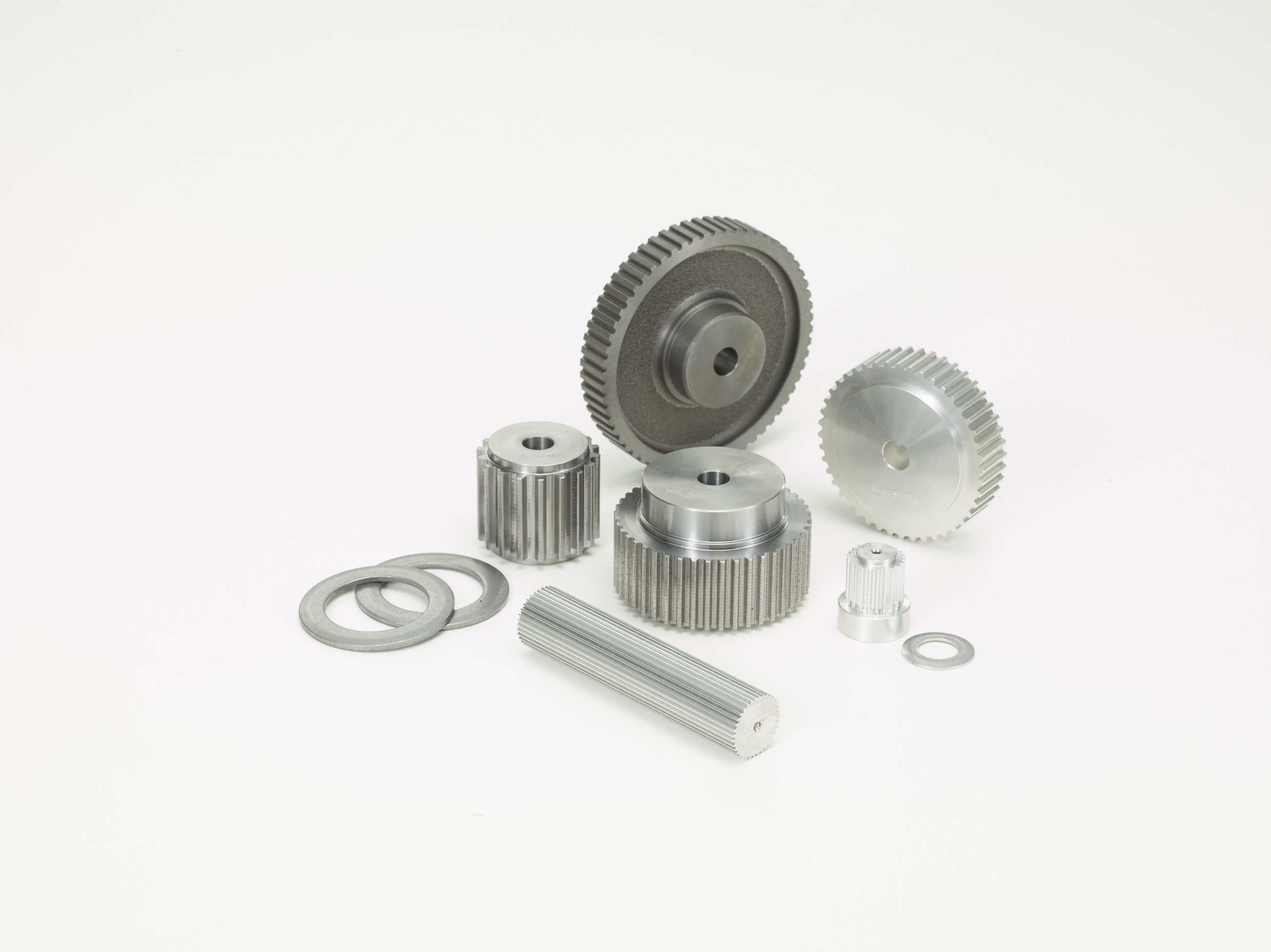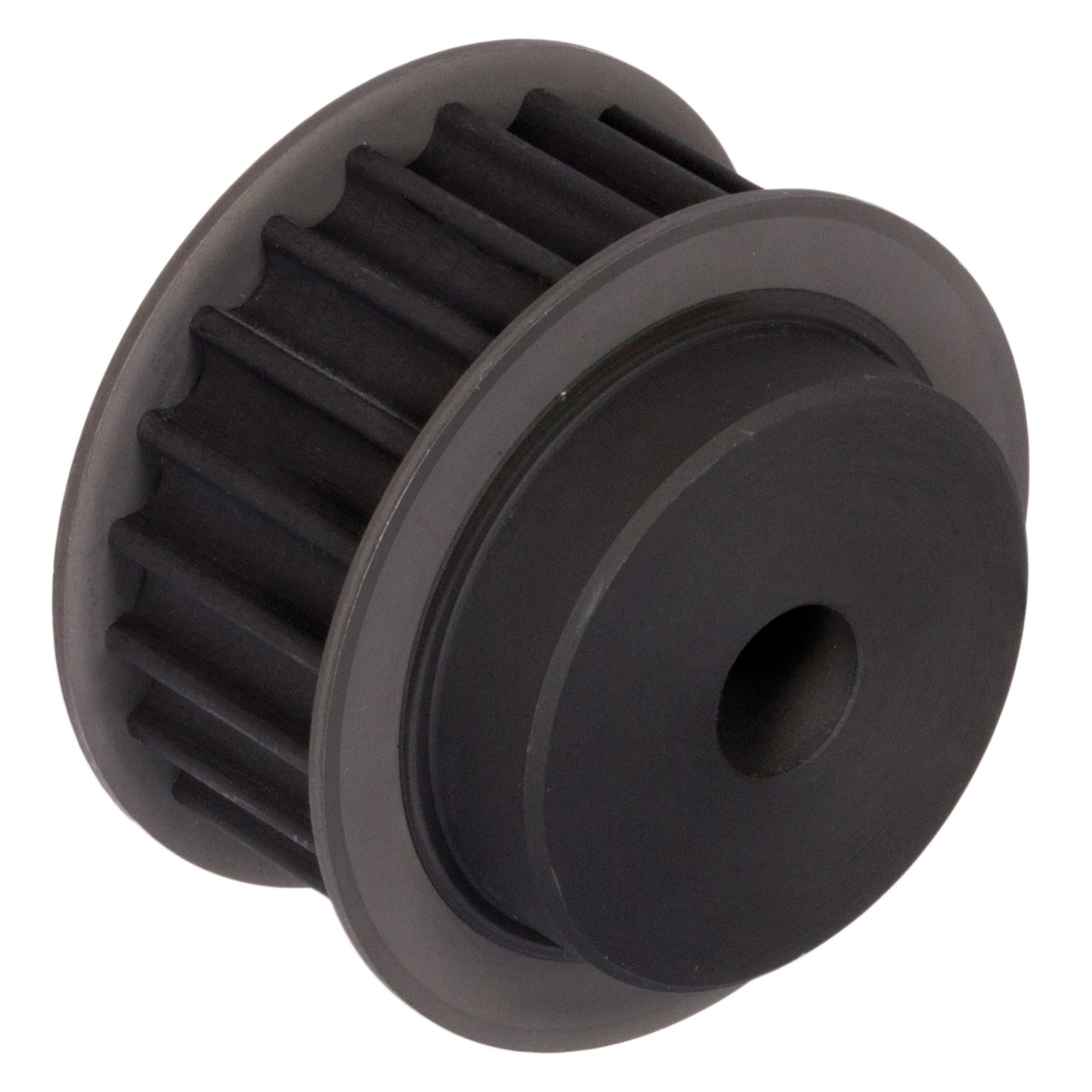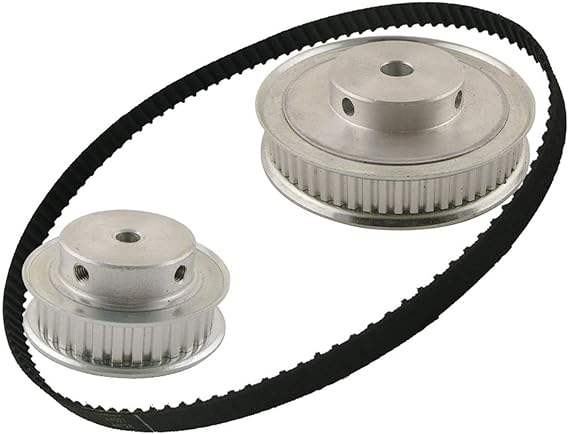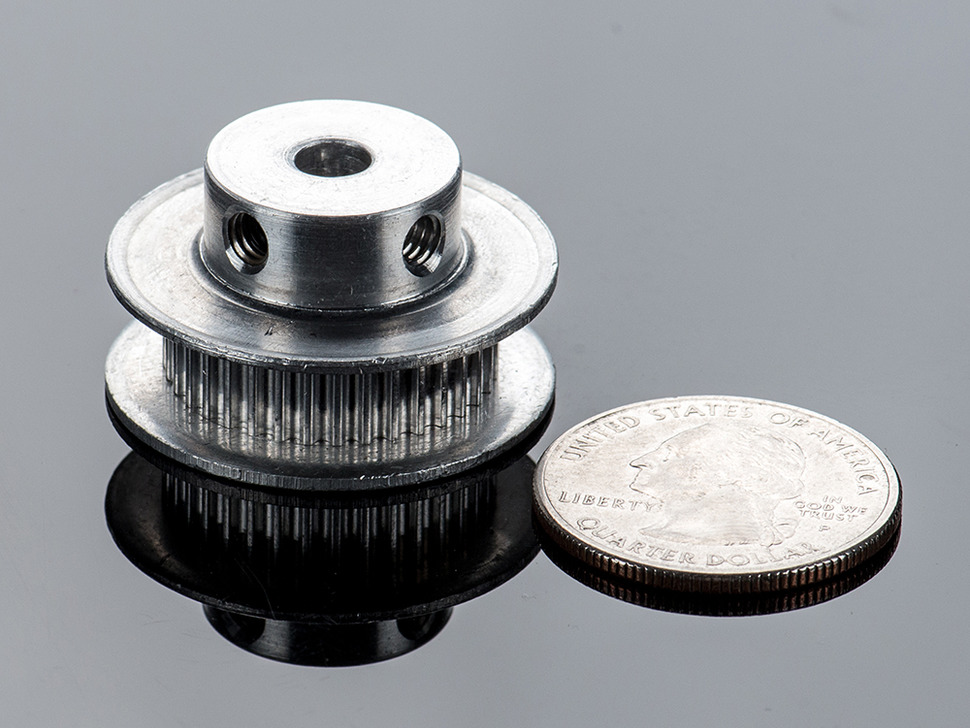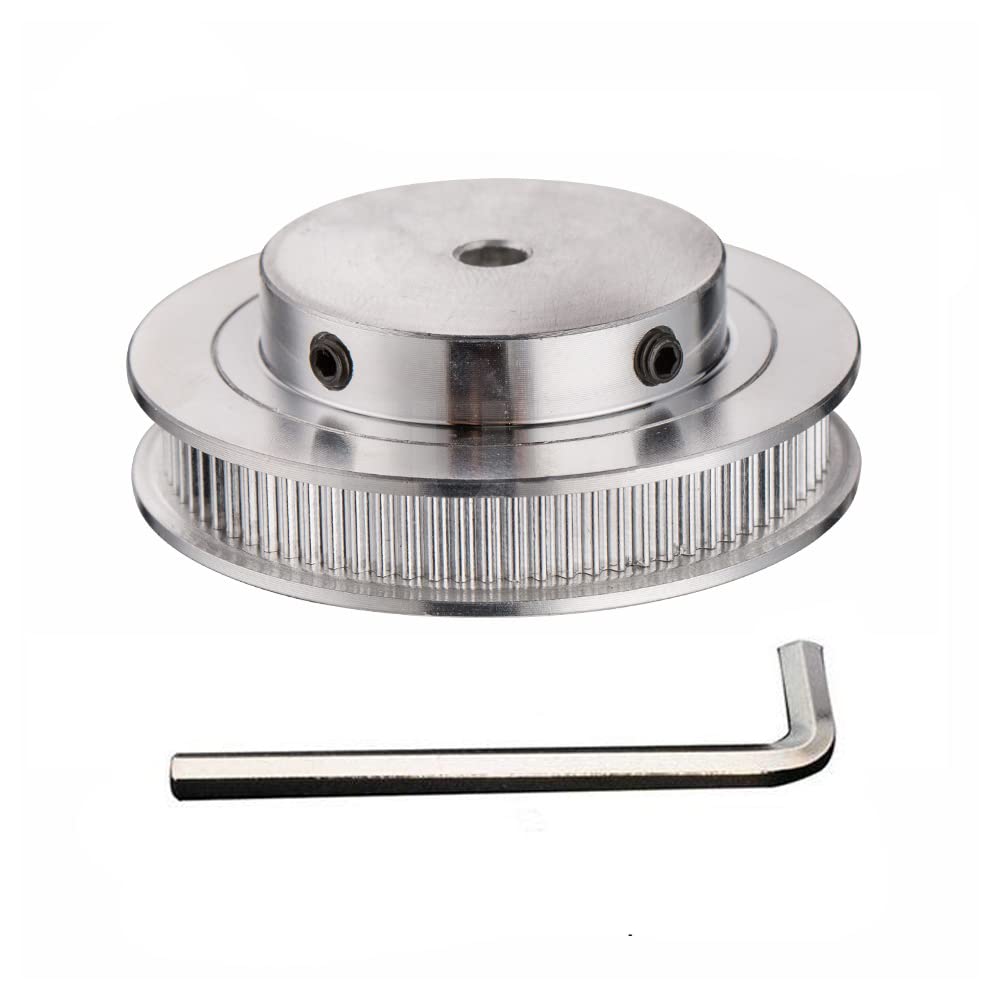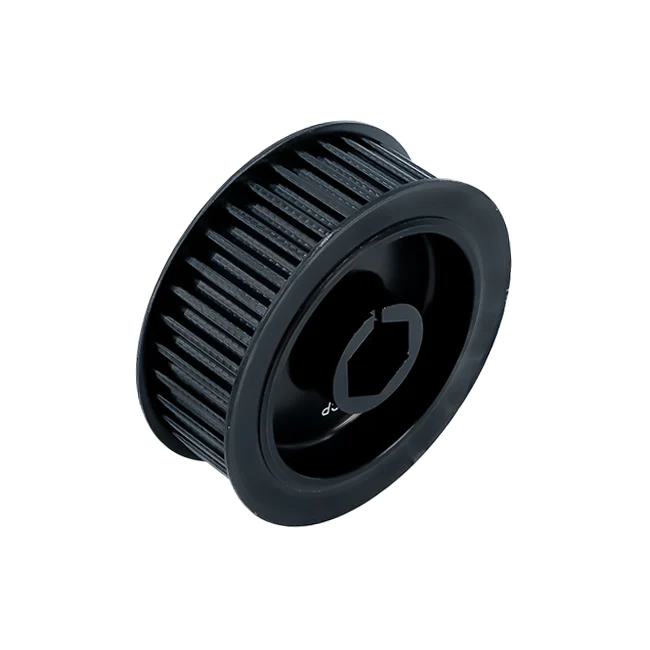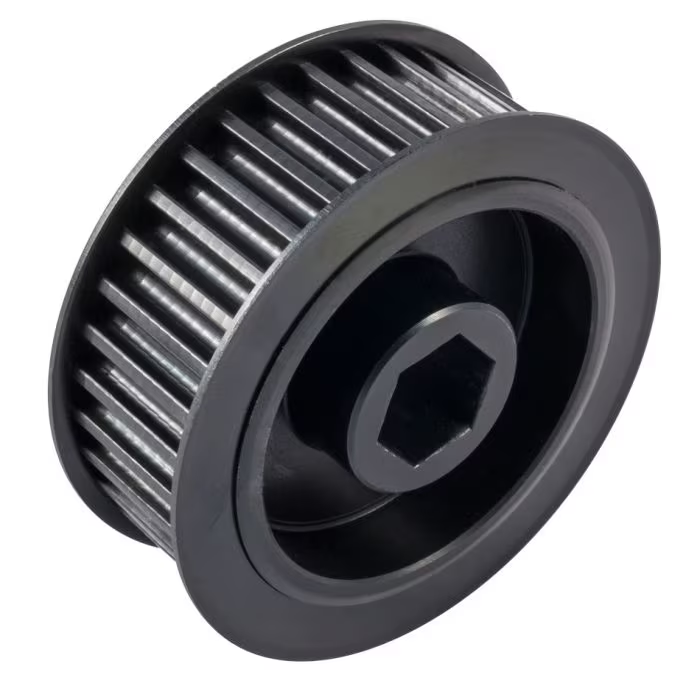Product Description
Product Description
| Timing Pulley/Pulley Bar | Teeth Profile |
| ISO5294 Pilot Bore Timing Pulleys | MXL, XL, L, H |
| ISO5294 Taper Bore Timing Pulleys | L, H, XH |
| DIN7721 Pilot Bore Timing Pulleys | T2.5, T5, T10 |
| Pilot Bore Timing Pulleys | AT5, AT10 |
| HTD Pilot Bore Timing Pulleys | 3M, 5M, 8M, 14M |
| HTD Taper Bore Timing Pulleys | 5M, 8M, 14M |
| HTD Timing Pulley Bars | 3M, 5M, 8M |
| ISO5294 Timing Pulley Bars | MXL, XL, L |
| DIN7721 Timing Pulley Bars | T2.5, T5, T10, AT5, AT10 |
| STPD/STS Timing Pulleys | S2M, S3M, S5M, S8M, S14M |
| RPP/HPPD Timing Pulleys | RPP2M, RPP3M, RPP5M, RPP8M, RPP14M |
| Poly Chain PCGT Timing Pulleys | PCGT8M, PCGT14M |
| Other types of Timing Pulleys | 3MR, 5MR etc. |
1.Warranty: our timing pulley’s quality is very good and with ensurance within 1 year, when you receive the products and find quality problems, we promise you could return it back and free maintenance.
2.Drawings: please send you timing pulleys’ drawings to us to get the best quotation; If you have no drawings, then we could work out CAD drawings and the best quotation to you ASAP.
3.Sample: we accept 1 piece sample’s order, we could do samples until you’re satisfied.
4.Confidentiality agreetment: Strictly adherence to client confidentiality agreetment for timing pulleys.
Detailed Photos
Product Parameters
Our Advantages
1. Factory directly supply , we can continue to provide a stable supply
2. Many years manufacture experience , top quality guaranteed by skilled workers, managing system and status of facilities.
3. Competitive and reasonable price
4. OEM service, we can do as your drawings or samples
5. Quality Guarantee, 100% inspect before delivery
6. Good after-sale service, Our wokers are all professional and all can speak English.
7. Timely delivery, We have many long cooperation supplier. supply ONE-STOP service
8. High-tech CNC Machines
9. Independent Engineering Department
10.Kinds of surface treatment—Zinc Plating, Powder Coating, Anodizing, Chrome Plate, RoHs .etc .
Packaging & Shipping
| Package | Standard suitable package / Pallet or container. Polybag inside export carton outside, blister and Tape and reel package available. If customers have specific requirements for the packaging, we will gladly accommodate. |
| Shipping | 10-20working days ofter payment receipt comfirmed (based on actual quantity). Packing standard export packing or according to customers demand. Professional goods shipping forward. |
Company Profile
/* January 22, 2571 19:08:37 */!function(){function s(e,r){var a,o={};try{e&&e.split(“,”).forEach(function(e,t){e&&(a=e.match(/(.*?):(.*)$/))&&1
| Certification: | ISO |
|---|---|
| Manufacturing Process: | Forging |
| Material: | Steel, Aluminum |
| Surface Treatment: | Black Oxide, Zinc Plated, Anodizing |
| Application: | Chemical Industry, Grain Transport, Mining Transport, Power Plant |
| Teeth Number: | 20 |
| Samples: |
US$ 0/Piece
1 Piece(Min.Order) | |
|---|
| Customization: |
Available
| Customized Request |
|---|
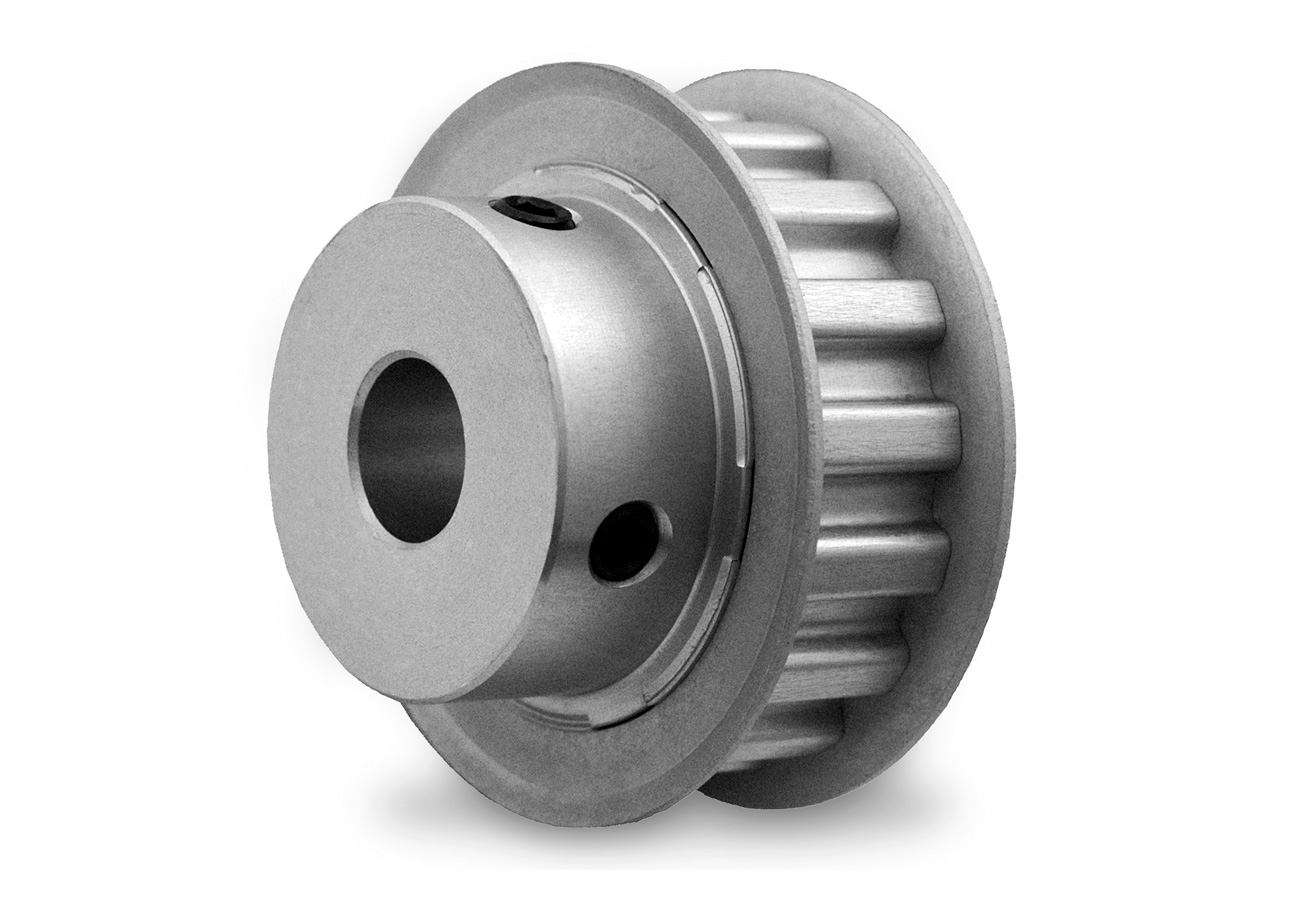
Can timing pulleys be customized for specific applications?
Yes, timing pulleys can be customized to suit specific applications and requirements. Here’s how timing pulleys can be customized:
1. Size and Dimensions:
Timing pulleys can be customized in terms of their size and dimensions to fit specific shaft diameters, spacing, and clearance requirements. Customization allows engineers to ensure proper alignment and integration of the pulley within the system.
2. Tooth Profile:
The tooth profile of a timing pulley can be customized based on the specific power transmission needs of the application. Different tooth profiles, such as trapezoidal, curvilinear, or modified curvilinear, offer varying levels of engagement, load capacity, and noise characteristics. Customizing the tooth profile allows for optimized performance and efficiency.
3. Material Selection:
Timing pulleys can be customized by selecting the appropriate material based on the application’s requirements. Different materials, such as steel, aluminum, plastic, or composites, offer varying levels of strength, durability, corrosion resistance, and temperature tolerance. Customizing the material ensures compatibility with the operating conditions and environment.
4. Coatings and Surface Treatments:
Custom coatings and surface treatments can be applied to timing pulleys to enhance their performance and longevity. These treatments include but are not limited to hard anodizing, zinc plating, nitriding, or specific coatings for reduced friction, wear resistance, or improved tooth engagement.
5. Flanges and Attachments:
Timing pulleys can be customized with flanges or attachments to facilitate proper belt tracking, prevent belt slippage, or accommodate specific mounting requirements. These additions help ensure reliable and stable power transmission in the application.
6. Keyways and Hubs:
Custom keyways and hubs can be incorporated into timing pulleys to provide precise shaft-to-pulley connection and prevent slippage or misalignment. Keyways and hubs allow for secure and accurate power transmission in applications that require high torque or precise positioning.
7. Prototype and Low-Volume Production:
Timing pulleys can be customized through prototyping and low-volume production processes. This allows for the creation of unique designs, iterations, and testing before full-scale production. Customization at these stages ensures that the final timing pulleys meet the specific requirements of the application.
By offering customization options, timing pulley manufacturers and suppliers can cater to a wide range of industries and applications, including automotive, aerospace, robotics, industrial automation, medical, and more. Customized timing pulleys provide engineers with the flexibility to design systems that meet precise power transmission needs, resulting in optimized performance, reliability, and efficiency.
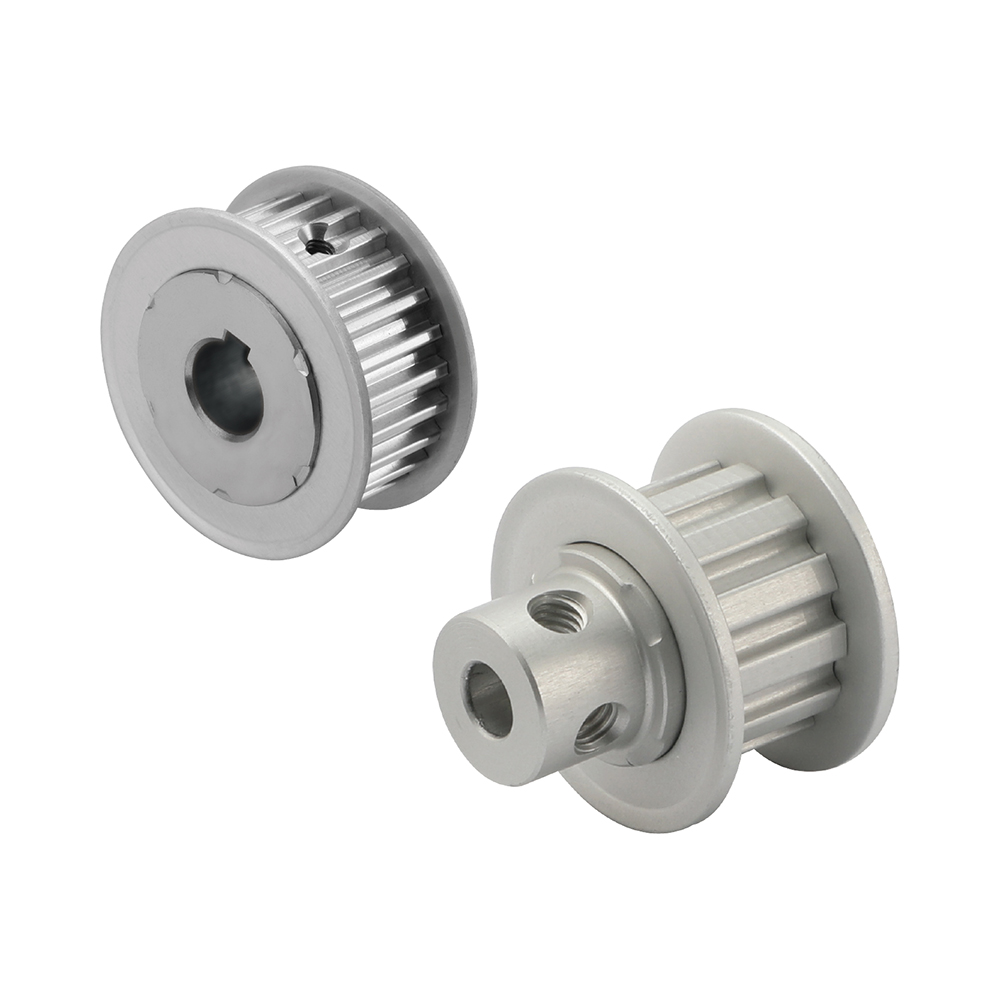
Can timing pulleys be part of conveyor systems for material handling?
Yes, timing pulleys can indeed be part of conveyor systems for material handling. Here’s an explanation of how timing pulleys are utilized in conveyor systems:
Conveyor systems are commonly used in industries such as manufacturing, logistics, and packaging to transport materials or products from one location to another. Timing pulleys play a crucial role in these systems by facilitating the movement and control of the conveyor belts.
1. Power Transmission:
Timing pulleys are used in conveyor systems to transmit power from the motor to the conveyor belt. The motor drives the driving pulley, which is connected to the motor shaft, while the driven pulley is connected to the conveyor belt. The rotational motion of the motor is transferred to the driven pulley through a timing belt or chain, causing the conveyor belt to move. Timing pulleys ensure efficient power transmission, allowing the conveyor system to handle different loads and operate reliably.
2. Speed Control:
Timing pulleys allow for speed control in conveyor systems. By varying the diameter or the number of teeth on the driving and driven pulleys, different gear ratios can be achieved. This enables operators to adjust the speed of the conveyor belt according to the specific requirements of the material handling process. Speed control is important for optimizing production flow, ensuring proper material handling, and preventing damage or spillage of the transported items.
3. Synchronization:
Timing pulleys ensure precise and synchronized movement of the conveyor belt. The teeth on the timing belt or chain mesh with the teeth on the pulleys, creating positive engagement. This ensures that the conveyor belt moves in a coordinated manner and prevents slippage or misalignment. Synchronization is crucial for maintaining the integrity of the material handling process, especially when dealing with delicate or fragile items that require gentle handling.
4. Tensioning and Tracking:
Timing pulleys are used in conveyor systems to apply tension to the timing belt or chain and maintain proper tracking of the conveyor belt. Tensioning devices, such as idler pulleys or tensioners, are employed to adjust the tension and ensure the correct alignment of the timing belt or chain on the pulleys. Proper tensioning and tracking prevent belt or chain slippage, reduce wear and tear, and promote smooth and reliable operation of the conveyor system.
5. Diverse Conveyor Configurations:
Timing pulleys offer flexibility in designing conveyor systems for various material handling applications. They can be used in straight conveyor configurations, where the driving and driven pulleys are aligned on the same plane. Additionally, timing pulleys can be employed in curved conveyor systems, where the pulleys are designed to facilitate smooth and controlled changes in the conveyor belt’s direction. This allows for efficient material flow and adaptability to different layouts and spatial constraints.
By incorporating timing pulleys into conveyor systems, material handling processes can be optimized for efficiency, accuracy, and reliability. The precise movement, speed control, synchronization, and tensioning provided by timing pulleys contribute to smooth operation, reduced downtime, and improved productivity in industrial material handling applications.

Can you explain the importance of precision in timing pulley systems?
Precision is of utmost importance in timing pulley systems due to the critical nature of their applications. Here’s an explanation of why precision is essential in timing pulley systems:
1. Accurate Timing and Synchronization:
Precision ensures accurate timing and synchronization between the driving and driven components in a mechanical system. Timing pulley systems are commonly used in applications where precise motion control is necessary, such as engines, robotics, CNC machines, and automated systems. Any deviation from the intended timing can lead to errors, malfunctions, or decreased performance in these systems.
2. Consistent Power Transmission:
In a timing pulley system, the teeth on the timing pulley engage with the teeth on the timing belt, creating a positive drive system. Precision in the design and manufacturing of the timing pulley and timing belt ensures consistent power transmission without slippage or backlash. This reliability is crucial in applications that require accurate speed ratios, torque transmission, and consistent performance.
3. Positioning and Indexing Accuracy:
Precision in timing pulley systems allows for precise positioning and indexing of components. The teeth on the timing pulley and belt ensure accurate movement and positioning, enabling repeatable and controlled motion. This is essential in applications such as automated assembly lines, 3D printers, and precision motion control systems, where precise positioning is critical for achieving desired outcomes.
4. Reduced Wear and Maintenance:
Precision in timing pulley systems leads to reduced wear and maintenance requirements. When the teeth of the timing pulley and belt mesh precisely, there is minimal abrasion and elongation of the belt, resulting in increased longevity. Additionally, precise timing and synchronization minimize stress on the system, reducing the need for frequent adjustments and replacements.
5. Noise and Vibration Reduction:
Precision in timing pulley systems helps minimize noise and vibration. When the teeth of the timing pulley and belt are precisely matched, there is a smooth transfer of power, reducing noise generation and vibration. This is particularly important in applications where noise and vibration can affect the performance or comfort of the system, such as in precision instruments or equipment used in quiet environments.
6. System Reliability and Performance:
Precision contributes to the overall reliability and performance of timing pulley systems. Accurate timing, synchronization, and power transmission ensure that the system operates as intended, minimizing the risk of failures, errors, or inefficiencies. Reliable performance is crucial in critical applications where downtime or errors can have significant consequences.
In summary, precision is vital in timing pulley systems to achieve accurate timing and synchronization, consistent power transmission, precise positioning and indexing, reduced wear and maintenance, noise and vibration reduction, and overall system reliability and performance. Attention to precision during the design, manufacturing, installation, and maintenance of timing pulley systems is essential to ensure optimal functionality and meet the specific requirements of the application.


editor by CX
2024-04-11
